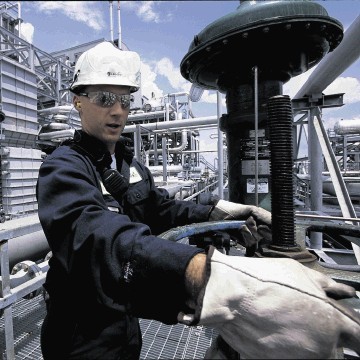
The creation of a Scottish CO2 (carbon dioxide) Hub can unlock UK and European potential for carbon capture and storage (CCS), according to a new report.
The report – A Unique Opportunity for the United Kingdom – published by Scottish Carbon Capture & Storage (SCCS) outlines a concept proposal to re-energise the deployment of CCS in the UK and Europe.
A Scottish CO2 Hub, could help tackle greenhouse gas emissions by providing a stepwise, affordable route to a Carbon Capture and Storage (CCS) industry in the UK using existing infrastructure, established shipping technologies and well-characterised storage assets in the Central North Sea.
The hub would serve as a central collection point for CO2 emissions from different sources across Europe, from where the greenhouse gas would be transported for permanent storage in rocks deep beneath the North Sea.
By starting with a modest industrial and power CCS cluster in Central Scotland that can make use of existing pipelines and offshore infrastructure to establish CO2 storage in the Central North Sea quickly and affordably, the study indicates how this could develop into a new large-scale industry for the UK while helping solve Europe’s CO2 storage challenge.
Stuart Haszeldine, Professor of CCS at the University of Edinburgh and SCCS Director, said: “The beauty of this proposal is its flexibility and adaptability. From a small start capturing emissions in Scotland with transport and storage based on existing assets, the system can be progressively expanded to receive CO2 from England and Europe using shipping, instead of large expensive pipes.
“By the early 2020s this can achieve a key milestone in the deployment of CCS – the establishment of commercial storage operations in the North Sea – with a whole new industry following from that.
“A critical point is that while re-evaluation and consideration of CCS options is underway, it is essential than no decommissioning of potentially relevant pipelines, boreholes or offshore facilities is agreed by the UK Government or the Oil & Gas Authority.”
The proposal can be achieved economically and rapidly by reusing existing infrastructure (avoiding decommissioning costs); by value generated from a CO2 utilisation market created through CO2-Enhanced Oil Recovery to help maximise economic recovery of oil; and through a flexible shipping solution for CO2 transport from southern UK and European sources.
Using technology already well established for shipping liquefied CO2 between European ports, a ship transport system requires lower initial capital investment than building pipelines and allows sequential, project-by-project expansion of the system. This reduces the financial risks and makes investment more attractive.
Recommended for you
